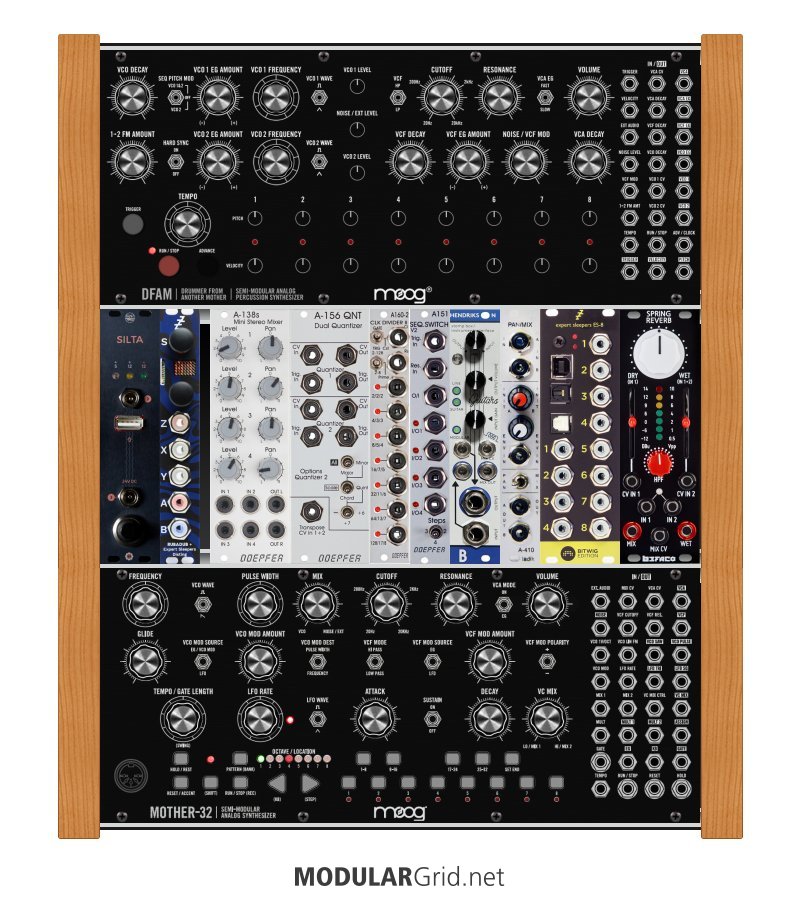Maths is like bacon...it goes great on everything!
Seriously, tho...Maths is probably the best-featured complex modulation source for its price. Yes, it'll work with the DFAM as well as most anything else you might use some type of modulation on. Looking at the setup above, though, I'd suggest that the M32 go on the bottom tier, since it has its 'chiclet' keyboard for input, step sequencer work, etc and it just makes sense to have that in a position where it's easiest to use. That would actually put the open-ended 60 hp cab in either the middle (where I would put it to easily work with both the DFAM and M32) or the top.
So...20 hp for the Maths, 3 for the Pico, 4 for the P/S...puts us at 27, 33 to fill. My instinct here would be to fill that remaining space with modules that can up the Moog modules' game, so...lessee...
Right off the bat, we can open up a new set of possibilities for the DFAM's sequencer by dropping in a quantizer. Since the DFAM was designed for 'drum' sounds, apparently it doesn't have an internal quantizer to properly scale pitches. Which makes sense; if you're creating not-exactly-pitched noises in the first place, you don't need a quantizer. But if you ADD a quantizer in that third cab, then you can use BOTH DFAM sequencer rows as proper pitched sequential sources. And even more twisty, if you also drop in something that can send a trigger on counting specific steps, you can vary the DFAM sequencer's row lengths. Quantizer-wise, the Doepfer A-156 offers a pair of basic quantizers in 8 hp, then for the row-count/switch voodoo, a Doepfer A-160-2 can handle a lot of clock-division counting duties while their A-151 offers up to four inputs switched to a single out. Why four? Well, that also allows the M32's sequencer to play into this craziness! Why not, right?
Hokay...16 more hp down, 17 to go. So...why not mix down both Moogs via the 3rd cab? And in stereo, since you've got that Pico DSP. Again, Doepfer...their new A-138s is an 8 hp stereo mixer, with manual level and pan controls. But then, feeding the Pico DSP's mono input is a little dicey there, so fix this with a Ladik A-410 panner/mixer. With that, you can use the module as either a mono aux-like tap in one signal line to feed the DSP, or you can mix down the DSP's output to pannable mono, and all of this can be put under CV control as well as used manually. And then button up that with a Bastl Hendrikson, which also allows for an FX-send-type stereo tap to insert the Pico DSP in post-mixer, and provides balanced stereo outs plus a headphone amp. That kills the space in that case, and provides both Moogs with some interesting sequential capabilities and a killer modulation source, plus a final stereo mix with FX send and/or returns. Pretty neat, I think!


